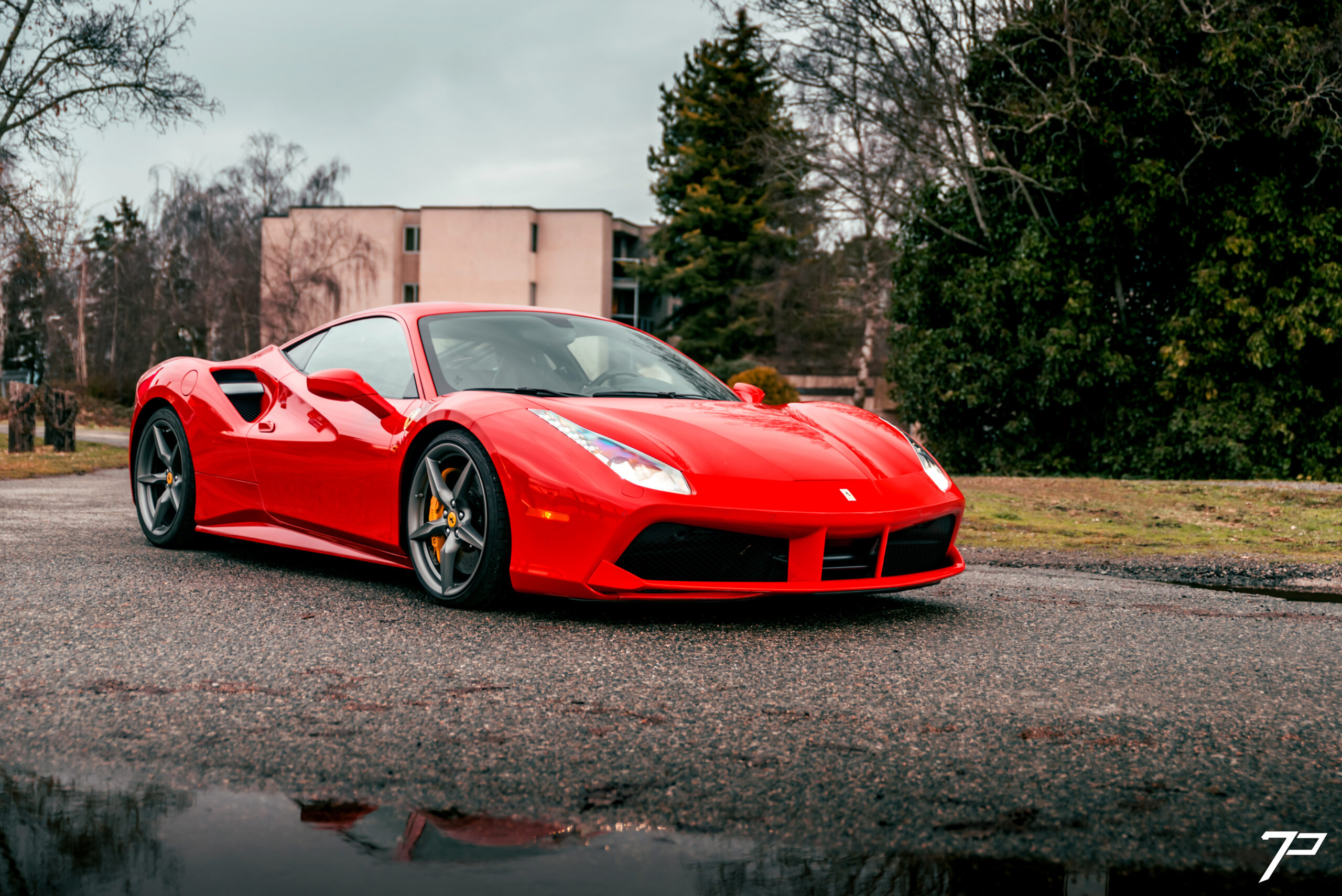Purity and Tradition. Ferrari has long been affiliated with these characteristics, and motorsports have been at the forefront of the brand’s principles. Those all-important factors of driver engagement and vehicle responsiveness trickle down into every example of a Ferrari road car. However, with Porsche’s 911 and Mclaren’s varying assortment of models stepping on Maranello’s toes, action needed to be taken to push the brand into the modern realm of high performance, and it planned to do so with turbocharging. Ferrari’s major leap into the 21st century with its mid-range cars hasn’t been surprising; the last forced induction Ferrari the public had the pleasure of witnessing was overseen by Enzo himself and celebrated a significant milestone for the brand – The F40. Before diving into this new coupe, we would like to thank our friend Tony for entrusting us with his beloved 488 GTB coupe.
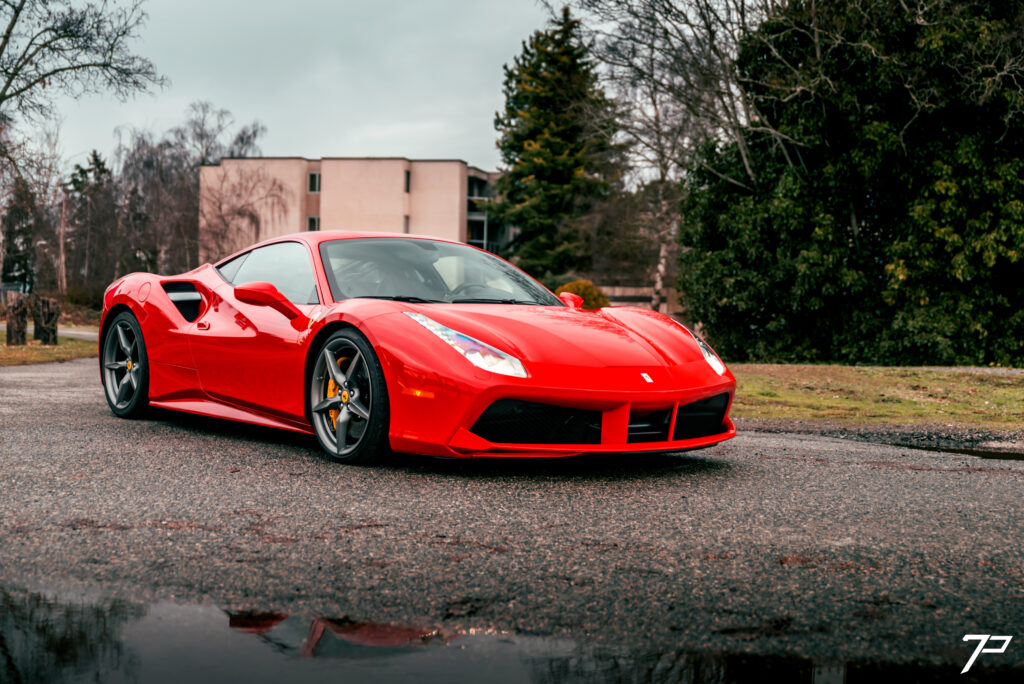
The 488 GTB (Gran Turismo Berlinetta) is an evolution of the 458 Italia. Both cars share components such as their chassis, suspension assemblies, and various electronic controls. Its beautiful shape has been chiselled and streamlined to make it slipperier than the 458. The new front bumper features pronounced air intakes and a splitter to force more air into the front-mounted radiators. Carved rockers and oversized air intakes flank the quarters mimicking the legendary 308 GTB. Even the most superficial details, such as the outside door handles, weren’t overlooked and redesigned to allow a smoother airflow transition. A new “blown” rear spoiler is now integrated with the rear bumper and deck lid; they channel out air through the aforementioned side intakes and over the back glass to increase downforce without requiring a larger raised spoiler.
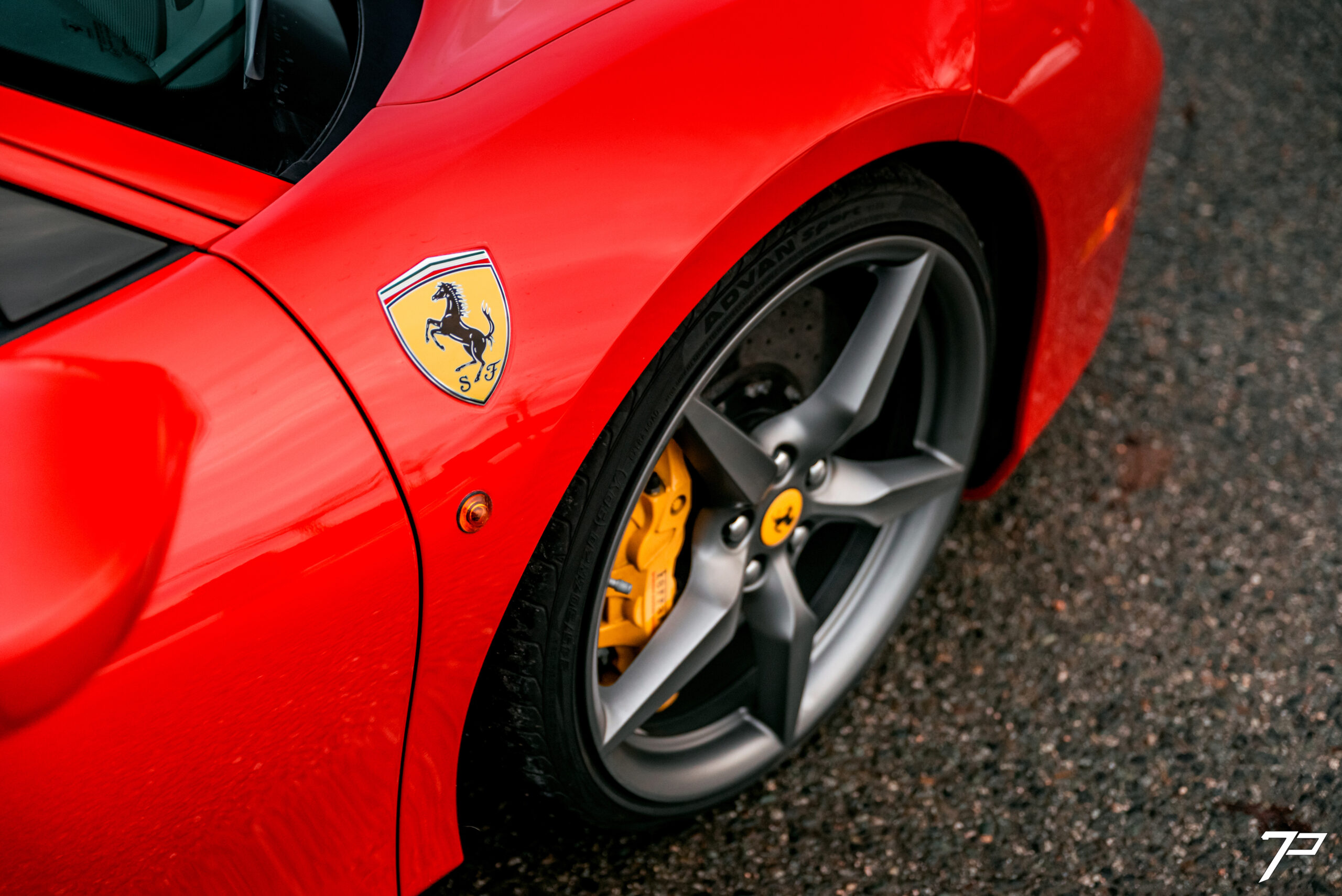
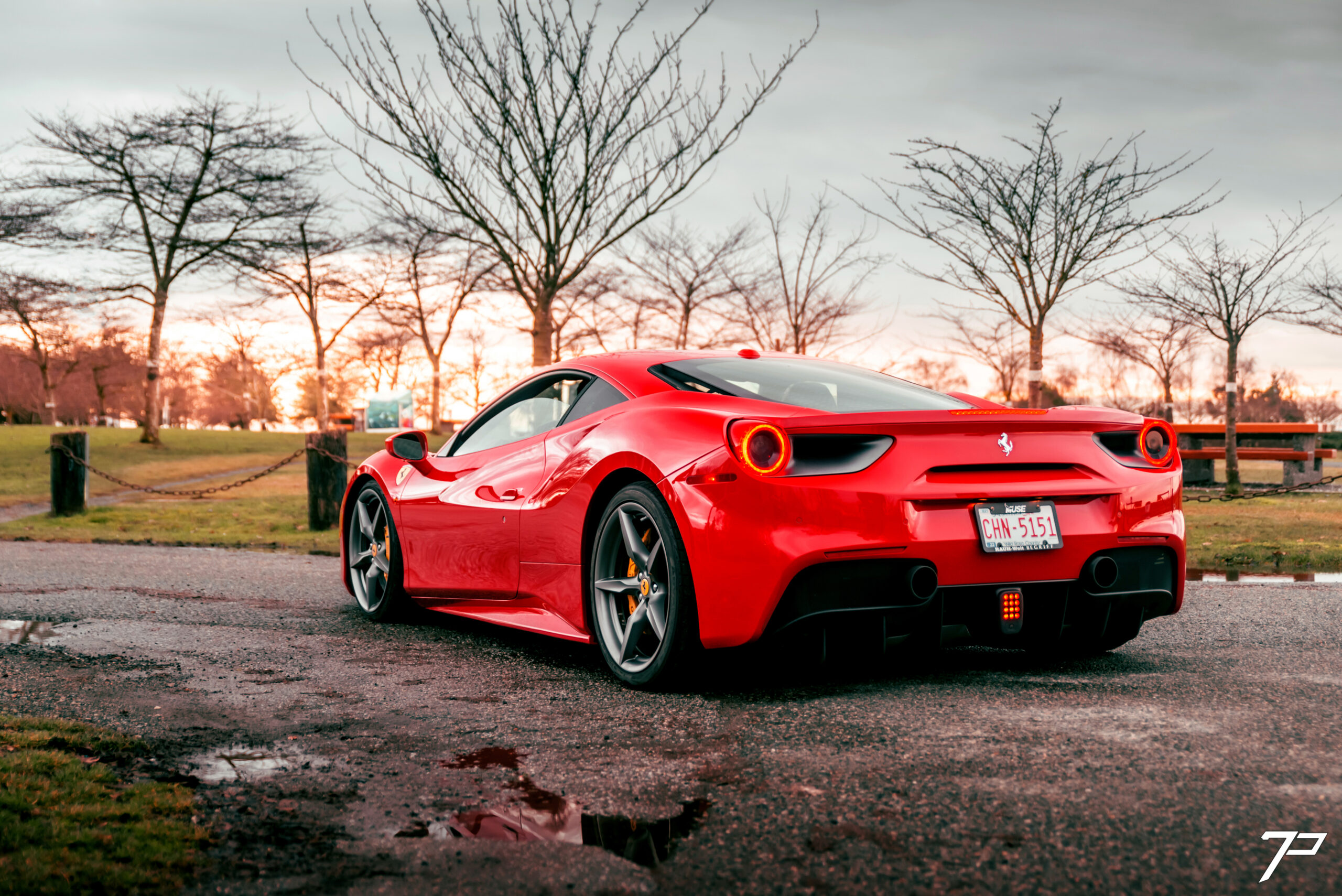
In true Ferrari fashion, the beast’s heart resides under the rear glass. The 488 numerics are derived from the cubic centimetres in each cylinder of the fire-breathing V8. The new “F154” 3.9 litre V8 is equipped with a pair of IHI ball-bearing turbochargers, helping produce 661hp and 561lb/ft of torque. Ensuring all of that power meets the pavement is a 7-speed dual-clutch “F1” transaxle (similar to the one in the 458) produced by Getrag (now owned by Magna Steyr). As a result, the GTB can sprint to 100km/h (62mph) in 3.0 seconds flat, propelling through the quarter-mile in 10.45 seconds and onto a top speed of 330km/h (205mph).
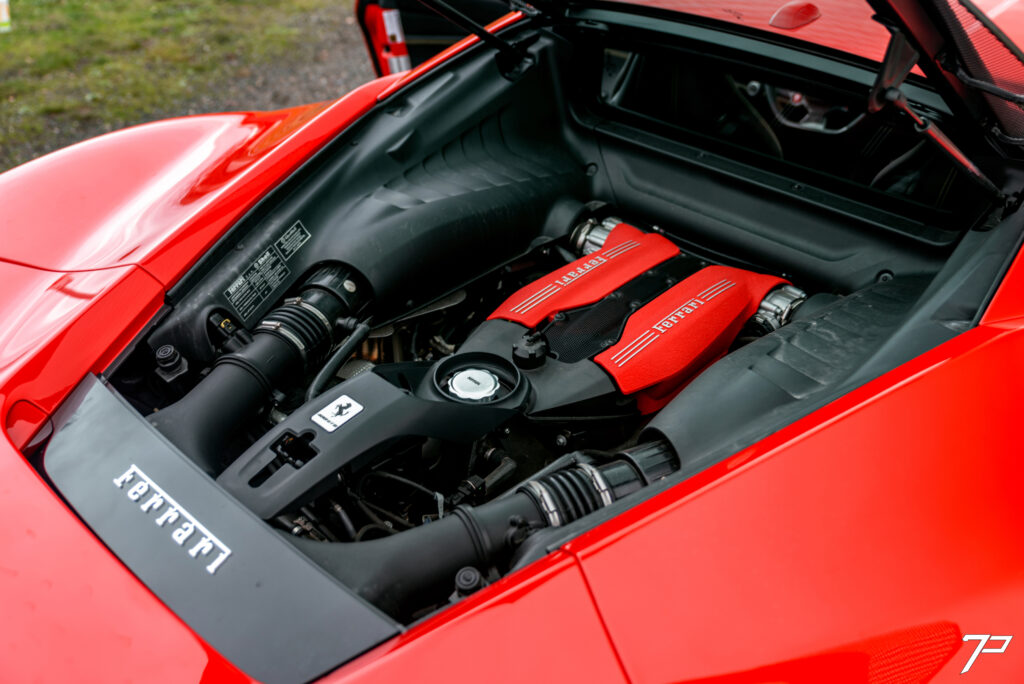
As we mentioned earlier, the F154 is the first forced-induction Ferrari road car engine since the legendary F40. Unfortunately, the 488 has not dodged backlash entirely. Some may feel forced induction robs the 488 of what makes it a Ferrari. Though the new engine features many distinct attributes to ensure it isn’t deprived of its unique character, inside the aluminum block are specially designed intake ports and direct fuel injection capable of 200BAR (2900psi). The oil pump is variable, making it capable of supplying oil pressure throughout the rev range. Roller rockers in the cylinder heads reduce friction, ensuring more power on the asphalt. The exhaust manifolds use a twin-scroll design, meaning cylinders are paired together with their exhaust pulses to spool the turbocharger more effectively. The turbos themselves also feature titanium-aluminum alloy compressor wheels for quicker spool-up.

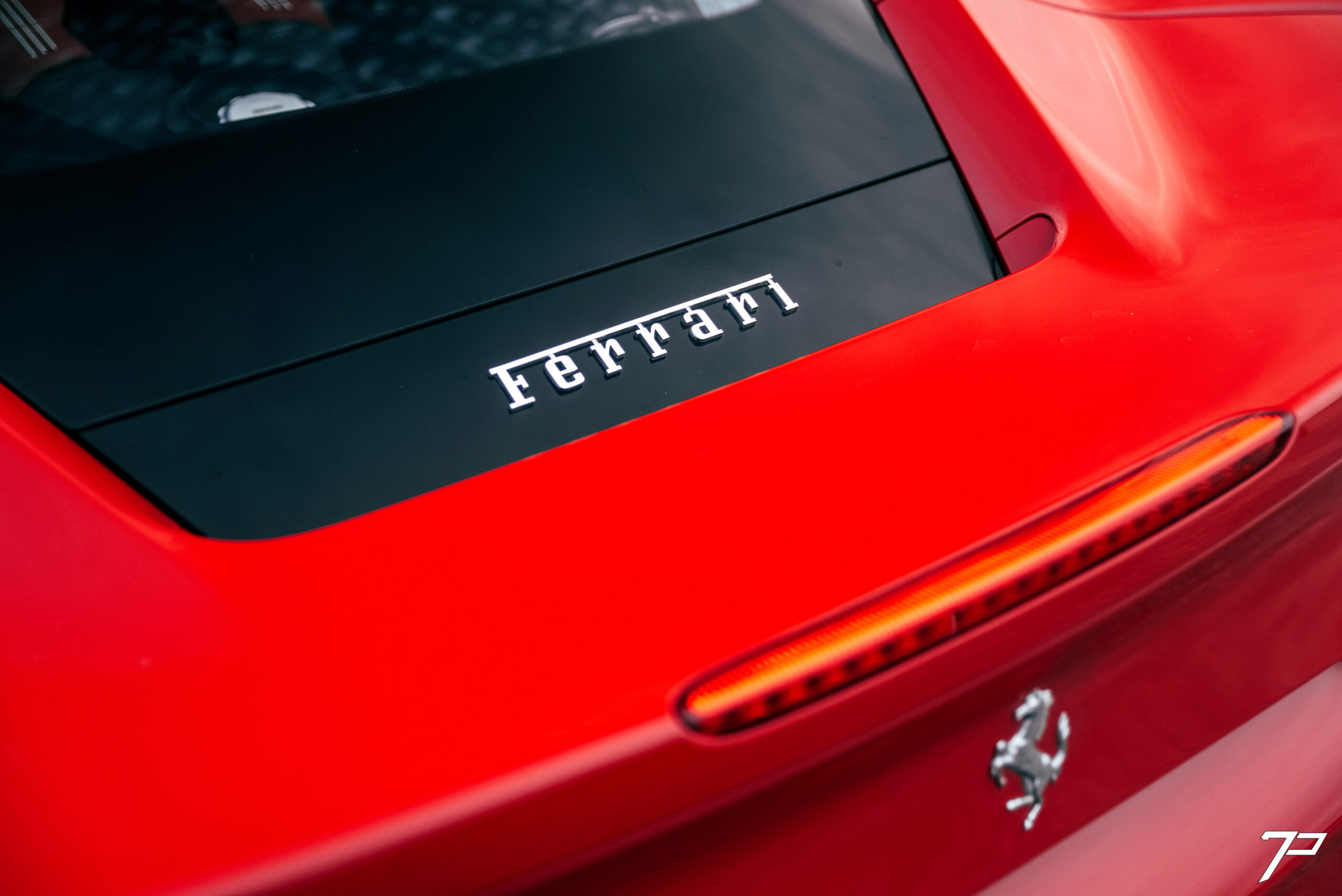
What would a high-performance supercar be with all that power and not be agile or unresponsive? Underpinning the 488 is double-wishbone geometry at all four corners and adaptive dampers developed in conjunction with Delphi, all carried over from the 458 except for the braking system. In addition, 400mm and 360mm rear carbon-ceramic discs are used with multi-piston Brembo calipers similar to those used on the LaFerrari helps bring the system into operating temperature faster than before and generates considerably improved stopping distances compared to the 458. An F1-derived ABS system preemptively fills the calipers with fluid upon throttle lift-off to aid in braking reaction time and Side Slip Control to help the driver take full advantage of this prancing horse’s dynamics to round out the handling department.
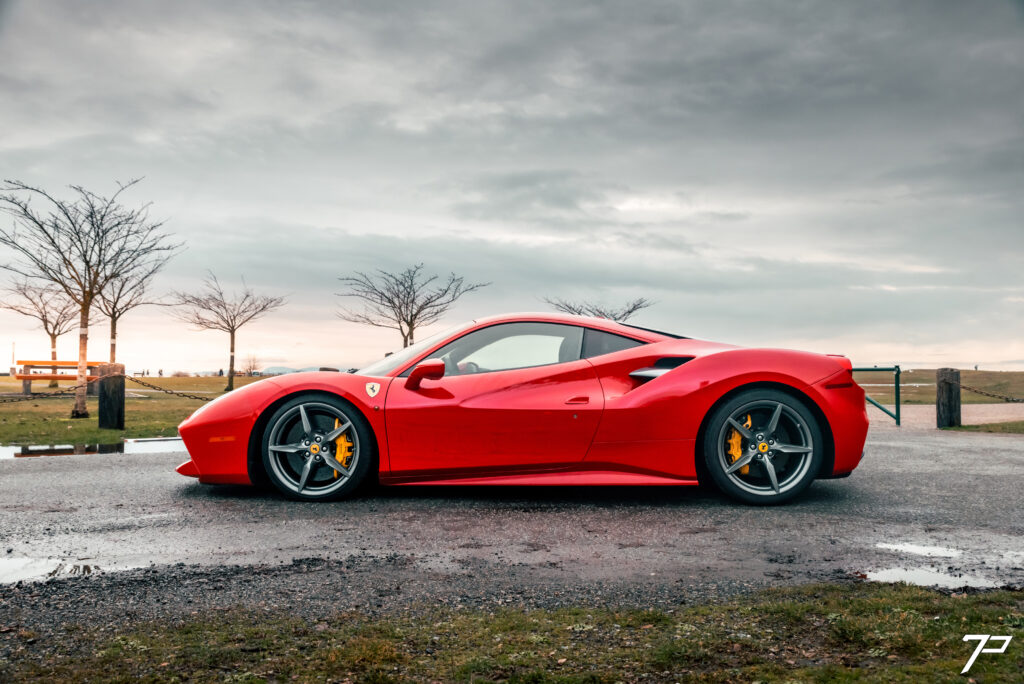
Perhaps tradition needs to step aside to make way for true innovation, and we feel the 488 is a fitting continuation of Ferrari’s mid-range lineup.

